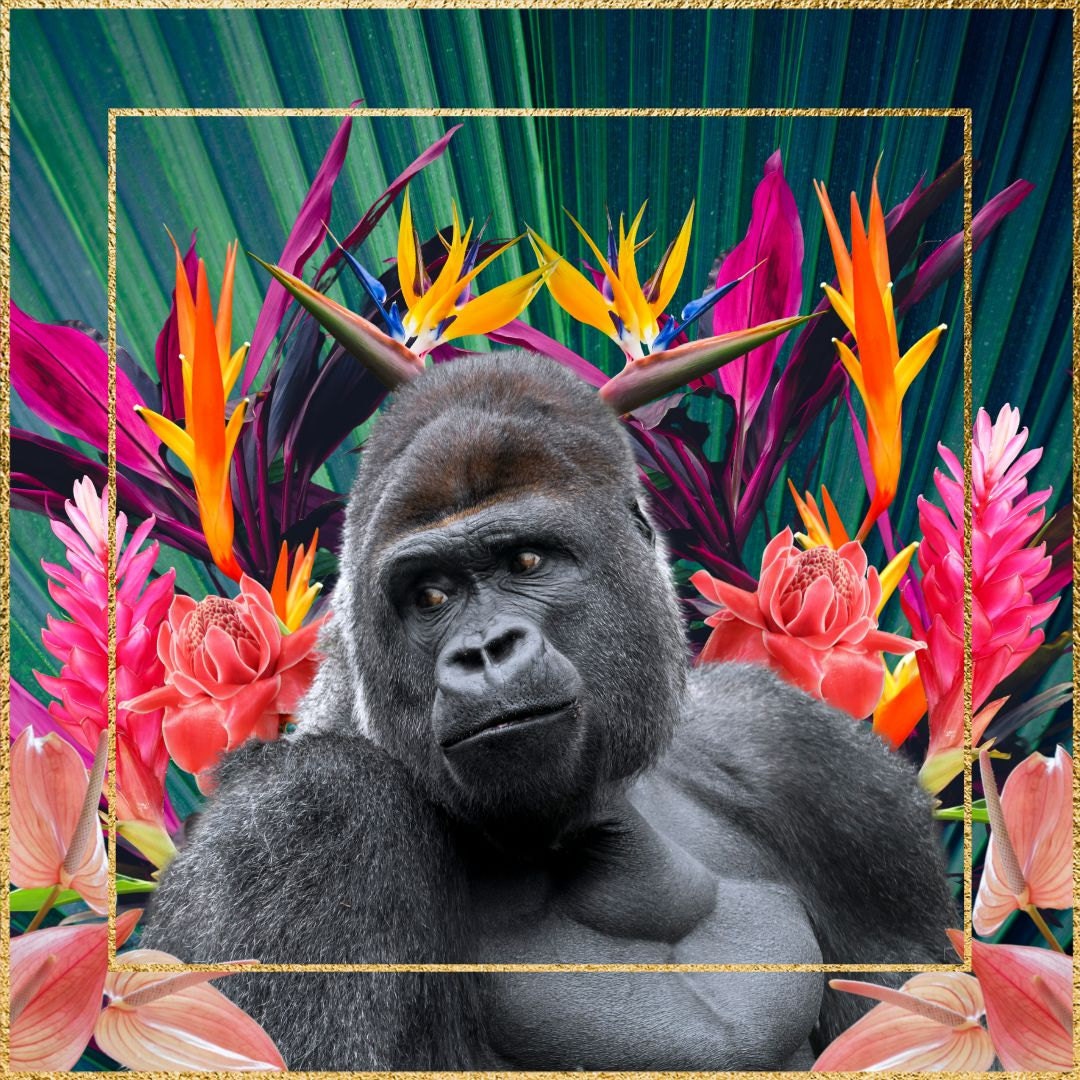
Dr. Seuss’s beloved classics, The Lorax and Horton Hears a Who!, have long captivated readers with their whimsical narratives and profound messages. Beyond their enchanting rhymes and illustrations, these stories impart timeless lessons on self-love, environmental stewardship, and the boundless power of imagination. They encourage us to listen—to ourselves, to others, and to the natural world around us.
My Story:
As a child, these were my favorite books. My dad used to joke with me, pointing at his fingertip and asking, What if we, like the Whos, were actually living on the tip of someone’s finger? Needless to say, this blew my mind and completely shifted the way I see the world. It planted the seeds of wonder and curiosity in me—sparking questions about how things work, how everything is interconnected, and what it would be like to experience existence from another perspective. That mindset has never left me. Thanks to Horton, I listen and see with my heart. To this day, it remains my favorite book.
The Lorax also held a special place in my heart. It ignited my early dream of studying Environmental Science—a path I was unable to complete at the time, but one that ultimately led me back to school later in life to pursue a degree in Landscape Architecture. The Lorax’s words have never left me:
“I am the Lorax, and I speak for the trees. I speak for the trees, for they have no tongues.”
This truth has stayed with me. I was lucky enough to grow up in an outdoor-loving family, with the privilege of playing outside, riding bikes and horses, camping, and experiencing true independence in nature. That was a gift, one I remain deeply grateful for. Nature has always been my refuge, my teacher, my first friend.
We often overlook that just because the natural world does not have words, it does not mean it has no voice, no sentience. We see this truth revealed time and again—whether through the intelligence of animals given tools to communicate, like dogs with talking buttons, or through Koko the Silverback Gorilla, who learned sign language and demonstrated an extraordinary depth of emotion, care, and understanding.
Koko once shared a message with humanity, one that echoes the lessons of The Lorax:
“I am Gorilla. I am flowers, animals. I am nature. Man Koko love. Earth Koko love. But man stupid… stupid! Koko sorry. Koko cry. Time hurry! Fix Earth! Help Earth! Hurry! Protect Earth. Nature see you. Thank you.”
Her words, like those of the Lorax, are a call to action—a reminder that we, too, can be stewards of the planet. That we can choose to listen. That we can be the ones who speak up for nature, for the trees, for the countless beings who share this Earth with us.
We only have one planet. It belongs to far more than just us.
The Observation:
Embracing Self-Love and Teaching Compassion
In Horton Hears a Who!, Horton the elephant teaches us that “a person’s a person, no matter how small.” This poignant message underscores the importance of recognizing the value in every individual, fostering empathy, and embracing our own worth. By cultivating self-love, we empower ourselves to create and imagine a better world, one where compassion and understanding are at the forefront.
The Lorax serves as a clarion call to protect our environment, reminding us that our actions have profound impacts on the world around us. The Lorax’s plea, “I speak for the trees, for the trees have no tongues,” emphasizes the need to be the voice for the voiceless and to create with a sense of responsibility and love for nature.
You might be wondering—how does this tie into design? It’s not just about aesthetics or function; it’s a mindset, a way of thinking and seeing the world around us. I believe this perspective is nurtured in us as children and expands as we grow. When we’re inspired to view the world and everything in it as part of a larger whole, it transforms how we live, work, design, and even how we treat ourselves.
This is how I connect these childhood favorites to design. My worldview and design aspirations have been evolving over a lifetime, shaped by moments of curiosity and wonder. When I encountered these themes—whether through Horton Hears a Who!, The Lorax, or the lessons of nature itself—something in me lit up. My mind instantly recognized the connection and said, Yes! I see it. I want to know more. These ideas resonated with the ideology of my inner child, offering me a practical way to work with and learn from nature. They taught me to listen and see in a new way.
How It Relates To Design:
Designing with Nature: Biomimicry and Biophilic Design
The fields of biomimicry and biophilic design exemplify how we can draw inspiration from nature to create sustainable and harmonious designs. Biomimicry involves emulating nature’s time-tested patterns and strategies to address human challenges, while biophilic design integrates natural elements into built environments to enhance human well-being.
One notable example is the Eastgate Centre in Harare, Zimbabwe, designed by architect Mick Pearce. This shopping center and office complex utilizes a ventilation system inspired by termite mounds, which maintain constant internal temperatures despite external fluctuations. By mimicking this natural cooling process, the building consumes significantly less energy compared to conventional structures. With temperatures rising globally, finding ways to lessen the need for air conditioning where possible has the potential to save lives and use less energy.
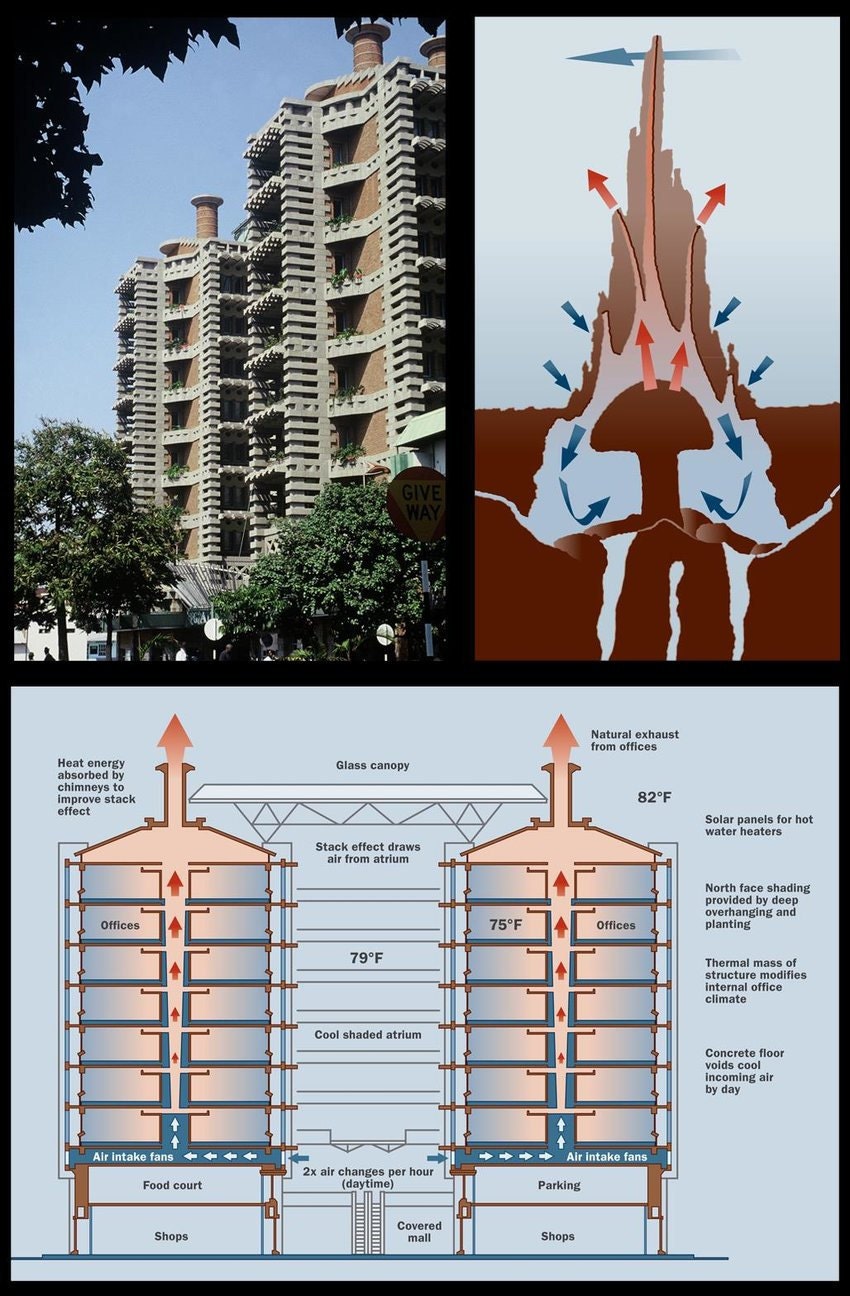
Another inspiring project is Singapore’s Jewel Changi Airport, designed by Moshe Safdie. This architectural marvel seamlessly blends nature with design, featuring a vast indoor garden and the world’s tallest indoor waterfall. The airport offers travelers a serene environment that fosters a deep connection with nature, embodying the principles of biophilic design. Imagine if more airports looked and felt this natural and relaxing.
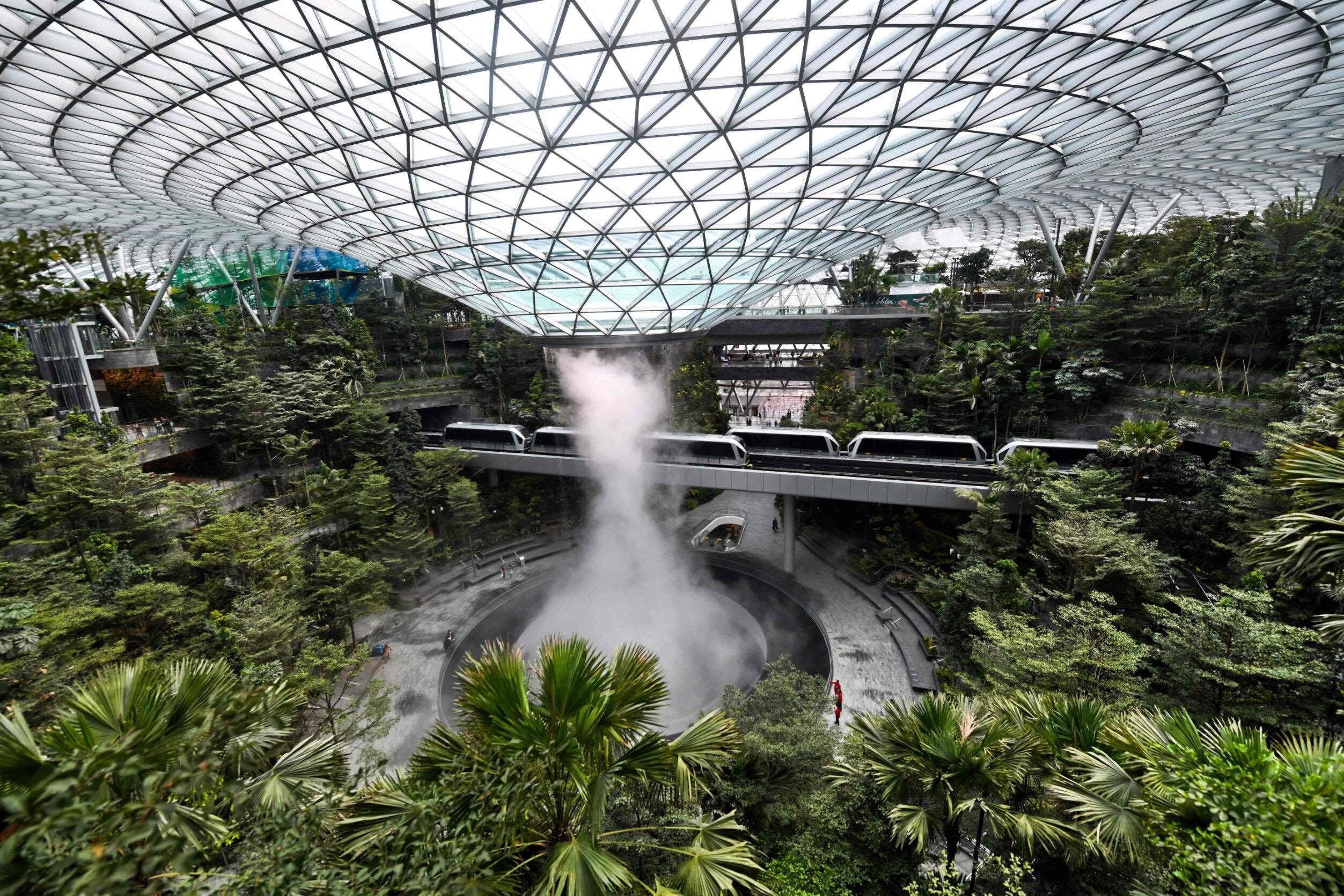
Innovative Designers Leading the Way
Bosco Verticale (inaugurated in 2014), or “Vertical Forest,” in Milan exemplifies innovative biophilic design by integrating extensive vegetation into urban residential architecture. Designed by Boeri Studio, this project comprises two towers, 80 and 112 meters tall, adorned with approximately 800 trees, 5,000 shrubs, and 15,000 plants. This lush greenery not only enhances the aesthetic appeal but also improves air quality and fosters biodiversity within the urban environment. This project makes my tree loving heart sing.
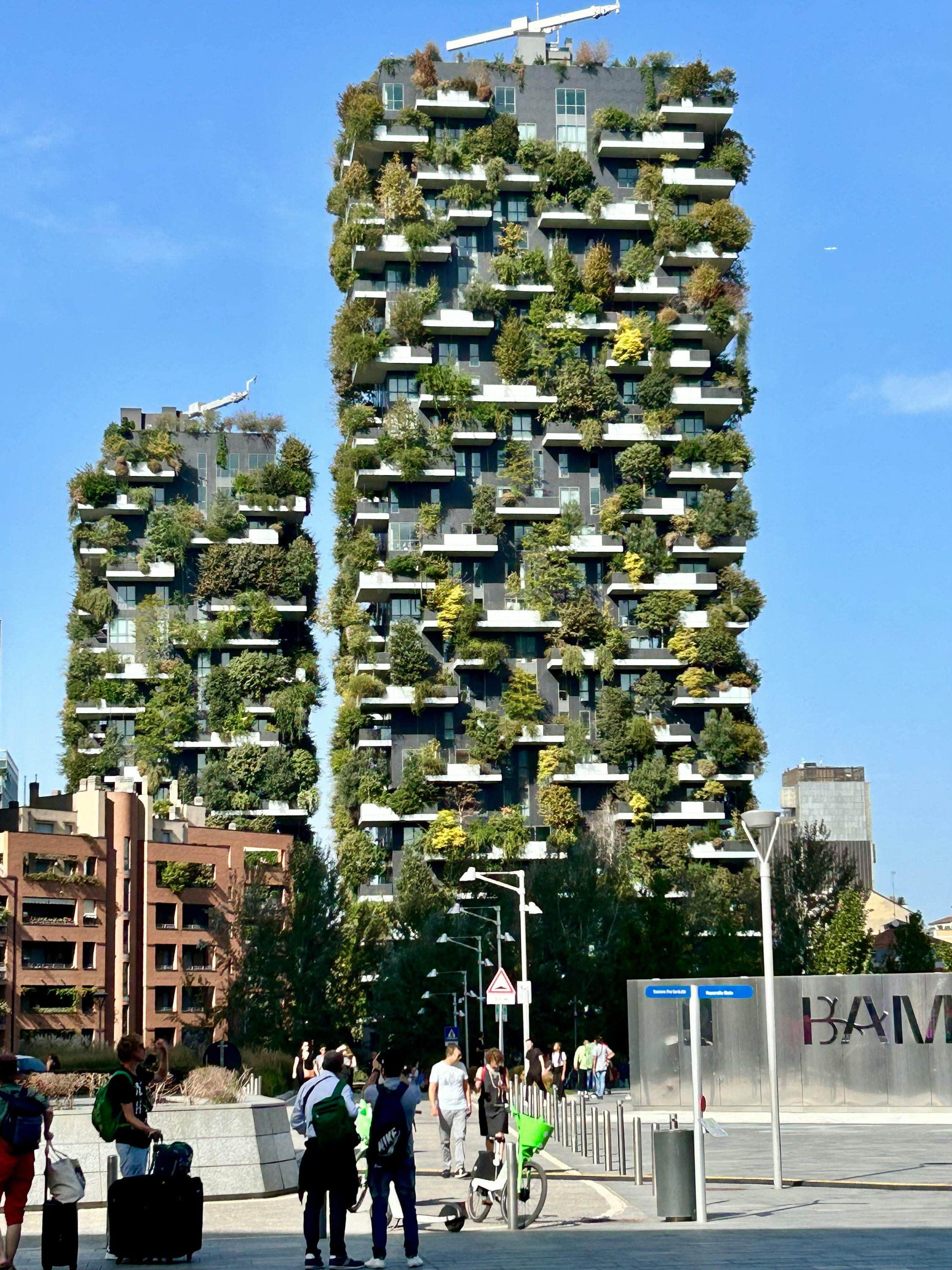
Engaging the Next Generation:
The Lorax Project:
The Lorax Project, (https://www.seussville.com/educators/the-lorax-project/) educates children about the importance of environmental stewardship and compassionate creation is vital for a sustainable future. The Lorax Project offers a wealth of resources for teachers and parents, including discussion questions and classroom activities that encourage critical thinking about conservation and responsibility.
Additionally, the collaboration between Dr. Seuss Enterprises and Minecraft introduces classic stories like The Lorax into the digital realm, offering interactive experiences that blend education with entertainment. This innovative approach allows children to explore environmental themes within a familiar platform, fostering learning through play.
Koko.org Kids:
The kids section on www.koko.org is a vibrant hub designed to ignite young minds with a passion for nature and conservation. This interactive area offers a variety of engaging activities, from fun educational games and puzzles to informative videos and stories about gorillas and wildlife. Tailored specifically for children, the platform encourages curiosity and empathy while teaching the fundamentals of conservation and communication. It’s a creative space where the lessons of Koko—emphasizing the importance of understanding and protecting our fellow creatures—come to life. By exploring Koko.org Kids, young learners not only gain knowledge but also develop a deeper connection with the natural world, inspiring them to become tomorrow’s environmental stewards.
Conclusion:
A Hopeful Vision for the Future
By embracing the lessons from KoKo, The Lorax, and Horton Hears a Who!, we can inspire a generation of designers, creators, and thinkers who prioritize empathy, sustainability, and innovation. Imagine a world where our buildings breathe like forests, our products emulate the efficiency of natural systems, and our communities thrive in harmony with the environment.
By weaving the wisdom of Dr. Seuss’s tales and inspirational Beings like KoKo into our approach to design and education, we can cultivate a world where creativity, compassion, and nature coexist harmoniously.
Join the Conversation
How can we, as individuals and communities, foster a deeper connection with nature in our daily lives? What are some ways we can teach children to create with love and responsibility? Share your thoughts and experiences in the comments below!
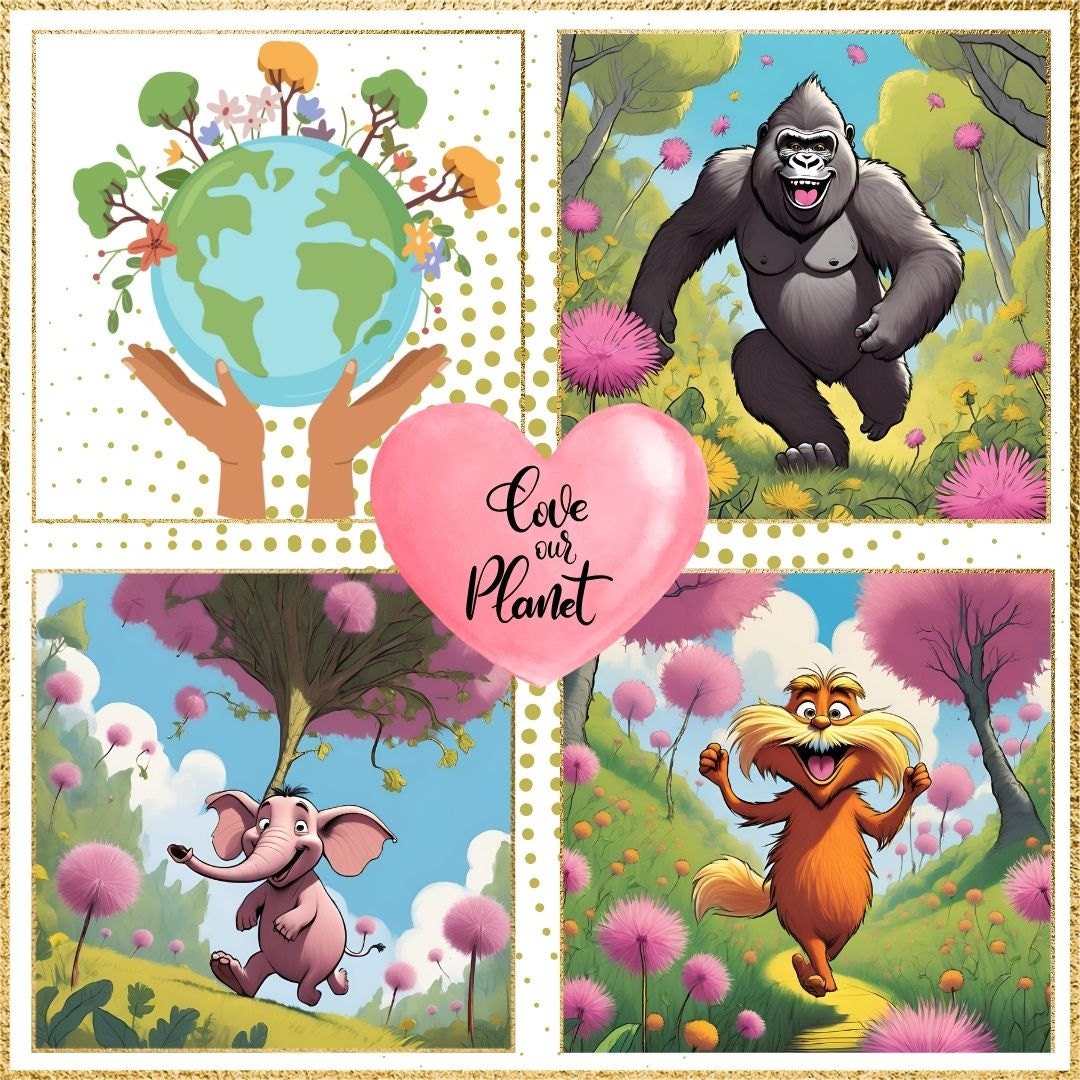
Additional Resources:
- Watch Koko’s message here:
https://youtube.com/shorts/bKVMMvnDKzQ?si=Oom5T99rMax_MuR_
- Learn more about Koko’s life and legacy:
Additional Learning For Kids:
- Learn with KoKo:
https://www.koko.org/kids4koko/
- The Lorax Project:
https://www.seussville.com/educators/the-lorax-project/
Further Reading / Works Cited:
- “Biomimicry versus Biophilia: What’s the Difference?” Terrapin Bright Green, 7 Feb. 2017, www.terrapinbrightgreen.com/blog/2017/02/biomimicry-versus-biophilia/.
- “Biophilic Interiors: 21 Projects that Blend Architecture with Nature.” ArchDaily, 17 Aug. 2021, www.archdaily.com/995875/biophilic-interiors-21-projects-that-blend-architecture-with-nature.
- “Exploring Nature’s Blueprint: Biomimetic Design vs. Biophilic Design.” Biomimicry New Zealand, 18 Apr. 2022, biomimicry.org.nz/exploring-natures-blueprint-biomimetic-design-vs-biophilic-design/. Boeri Studio.
- “Bosco Verticale / Boeri Studio.” ArchDaily, 23 Nov. 2015, https://www.archdaily.com/777498/bosco-verticale-stefano-boeri-architetti.
- “Elevating Nature: Milan’s Bosco Verticale.” Bioneers, https://bioneers.org/elevating-nature-milans-bosco-verticale-zp0z1806/.
- “Vertical Forest | Milan | Stefano Boeri Architetti.” Stefano Boeri Architetti, https://www.stefanoboeriarchitetti.net/en/project/vertical-forest/.
- “Dr. Seuss and Minecraft Team Up for a Fresh New Gamified Learning Experience (EXCLUSIVE).” Parents, 1 Nov. 2024, www.parents.com/dr-seuss-joins-the-world-of-minecraft-8728015.
- “Teacher Resources | The Lorax Project.” The Lorax Project, 15 Mar. 2013, wikeloraxproject.wordpress.com/teacher-resources/.
- Koko.org. Koko: The Gorilla Foundation, https://www.koko.org/kids.
- https://wikeloraxproject.wordpress.com/teacher-resources/
- https://www.novatr.com/blog/biomimetic-and-biophilic-designs
